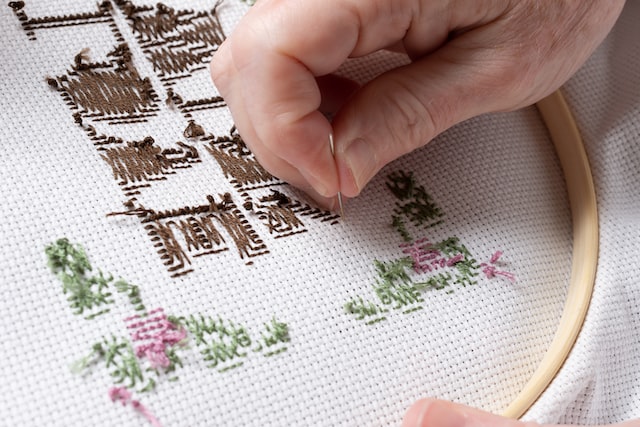There are many embroidery techniques that you can use in 2023, and the best ones for you will depend on your skill level and the specific project you are working on. Here are five embroidery techniques that you might find helpful:
Cross-stitch
This basic embroidery technique involves making tiny “X” shaped stitches to create a pattern or image. It is a good technique for beginners, as it is relatively easy to learn and well-suited to create geometric patterns.
Satin stitch
This technique involves making long, straight stitches that are closely spaced together to create a smooth, solid area of colour. It is a good technique for filling large rooms or creating lettering.
Running Stitch
This basic embroidery technique involves making a series of small, evenly-spaced stitches in a straight line. It can be used to create an outline or to add texture to a design.
Backstitch
This technique involves making a series of stitches that are worked back and forth, with the stitches being made in the opposite direction from the previous ones. It is a good technique for creating outlines or for outlining a design.
French Knot
This decorative embroidery technique involves making a small knot by wrapping the thread around the needle a few times and then pulling it through the fabric. It is a good technique for adding texture or creating small details.
Old vs New Embroidery Techniques
Many embroidery techniques have been used for centuries and are still popular today. Some examples of “old” embroidery techniques include cross-stitch, satin stitch, running stitch, backstitch, and French knots, which I mentioned in my previous response.
At the same time, many “new” embroidery techniques have been developed in recent years, either as modern interpretations of traditional techniques or as entirely new creations. Some examples of these more unique techniques might include:
Machine embroidery
This involves using an embroidery machine to create designs on fabric.
Embroidery Art
involves using embroidery techniques to create fine art pieces, often focusing on abstract or contemporary designs.
Embroidery on nontraditional materials
This involves using embroidery techniques to decorate materials other than fabric, such as leather, paper, or plastic.
Freeform embroidery
This is a more improvisational approach to embroidery that involves creating designs without following a specific pattern or plan.
Experimental embroidery
This involves using embroidery techniques in creative and unconventional ways, such as combining embroidery with other art forms or using unconventional materials.
Overall, there is no “right” way to do embroidery; the best technique depends on your style and the specific project you are working on.

